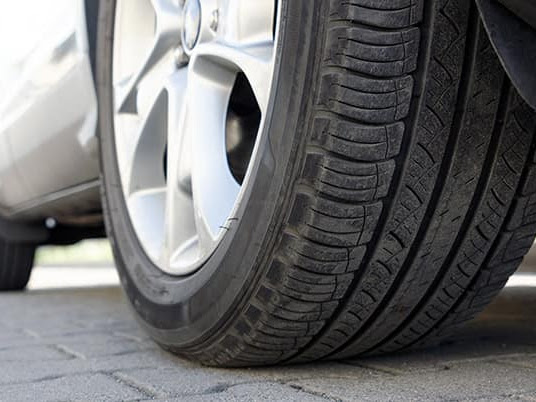
MAINTAINING PROPER TIRE PRESSURE

Follow these tire pressure steps—they’re the most important part of maintaining your tires:
- Step 1: Locate the recommended tire pressure on the Tire and Loading Information Labels on the driver’s side door edge or post or in the owner’s manual. (Remember, the correct pressure for your tire is what the vehicle manufacturer has listed, NOT what is listed on the tire itself.)
- Step 2: Check the tire pressure of all tires, including your spare tires.
- Step 3: If the tire pressure is too high in any of the tires, slowly release air by gently pressing on the tire valve stem with the edge of your tire gauge until you get to the correct pressure.
- Step 4: If the tire pressure is too low, note the difference between the measured tire pressure and the correct tire pressure. These «missing» pounds of pressure are what you will need to add. At a service station, add the missing pounds of air pressure to each tire that is under inflated.
- Step 5: Check all the tires to make sure they have the same air pressure (except in cases in which the front and rear tires are supposed to have different amounts of pressure).
Remember: The vehicle manufacturer’s recommended tire inflation pressure is the proper psi (pounds per square inch) or kPa (kilopascals—the metric measure used internationally) when a tire is cold, meaning it has not been driven on for at least three hours. To get an accurate tire pressure reading, you must measure tire pressure when the tires are cold or compensate for the extra pressure in warm tires.
If you have been driving your vehicle and think a tire is underinflated, fill it to the recommended cold inflation pressure indicated on your vehicle’s tire information placard or certification label. While your tire may still be slightly underinflated due to the extra pressure of a warm tire, it is safer to drive with air pressure that is slightly lower than the vehicle manufacturer’s recommended cold inflation pressure than to drive with a significantly underinflated tire.
Since this is a temporary fix, don’t forget to recheck and adjust the tire’s pressure when you can obtain a cold reading.
